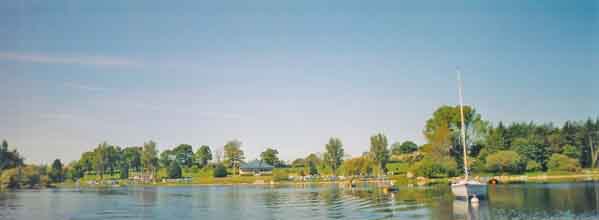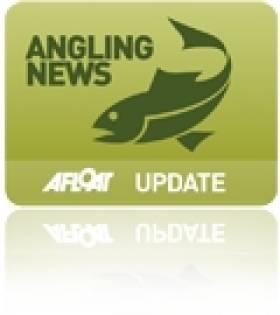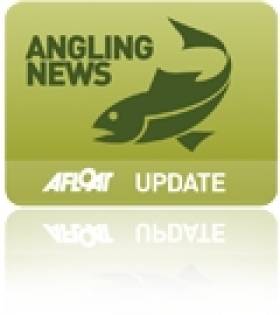Displaying items by tag: Co Wicklow
Search Scaled Down for Missing Crewman in Irish Sea
#RESCUE - BBC News reports that the search for a cargo ship crewman missing in the Irish Sea has been scaled down.
The 22-year-old from Slovakia was reported missing yesterday morning from the Fehn Sirius, which was en route from Belfast to Portugal, as it headed past Arklow, Co Wicklow.
According to The Irish Times, he was last seen on the cargo ship around 10pm on Monday night as it headed south of the entrance to Strangford Lough.
Lifeboats from Portaferry and Newcastle in Northern Ireland and Arklow joined the search and rescue operation, which was assisted by the RAF helicopter based at Prestwick in Scotland and an Irish Coast Guard helicopter.
However, most rescue services have now been stood down as the Fehn Sirius continues to backtrack in the Irish Sea, with assistance from the Naval Service vessel LE Ciara.
Only three days ago the body of another mariner was recovered from the Irish Sea off the north Dublin coast, more than a month after he went missing.
National Disabled Angling Centre to Stay Open Pending Review
#ANGLING - The National Disabled Angling Facility at Aughrim in Co Wicklow is to remain open following an 11th-hour agreement last month, The Irish Times reports.
A deal reached between Fás, Siptu and the centre's staff will retain all 23 jobs with a 25% pay cut and see the premises stay open until a "review" is published in March.
Opened by then President Mary Robinson in 1996, the facility is operated as a Community Employment Fás scheme and has been an invaluable amenity for disabled anglers nationwide.
Body of Garda Drowned in Flash Flood Recovered
The body of an off-duty garda who was swept away by floodwater in Co Wicklow during Monday's torrential rain has been recovered.
The Irish Times reports that 25-year-old Garda Ciaran Jones was pulled into the River Liffey at the Ballysmuttan Bridge around 7pm on Monday while warning motorists not to cross the bridge.
A search and rescue operation was immediately launched involving the Irish Coast Guard, the Garda helicopter and mountain and river rescue teams, according to the Irish Examiner.
His body was eventually found at 9am yesterday morning some 4km downstream of the incident.
Supt Eamon Keogh of Blessington Garda Station noted that Garda Jones had been crossing the bridge to warn an oncoming car when he was swept into the swollen river by a sudden surge of water.
Taoiseach Enda Kenny led tributes to the young garda as well as a woman who died at her home in Dublin during the flooding that caused chaos across the east of Ireland on Monday evening, with several inland waterways bursting their banks.
Volunteers Needed for Paddlefest 2011
The Irish Canoe Union has put out a call for volunteers to assist in the running of this year's Paddlefest event in Co Wicklow.
Paddlefest 2011 will be taking place on 25 and 26 September at the Hidden Valley Holiday Park in Rathdrum.
The junior paddling festival held every September. Each year 200 to 300 juniors participate in a variety of activities based around the different disciplines kayaking has to offer.
This year the Irish Canoe Union will be helping out with the organisation of the event, and is looking for volunteers to help give the children the opportunity to go kayaking over the corse of the weekend.
Anyone interested and available to help out should contact Benny Cullen at the Irish Canoe Union at [email protected].
Avoca Produces Record Sea Trout
Denis O'Toole has spoken of his amazement at catching a record 16-pound sea trout from the Acova River in Co Wicklow.
The angling hobbyist and professional fly dresser told the Bray People how he had spent the day fishing with a friend in what has been described as 'the most polluted river in Europe' when he spotted the monster, and decided to take up the challenge.
"I went down to the pool where I had previously seen the fish move," he said. "I put on a 1 1/2 inch aluminium tube with a salar single hook (with the barb squeezed down) and started at the head of the pool.
"On my fourth cast while stripping the fly back he hit it with a bang and all hell broke loose; all I could see was white foam on the water through the inky darkness. I thought I had hooked Free Willy."
O'Toole continued: "He was lying in only three feet of water when he took and in total the fight lasted 20 minutes. My fishing partner, Dean Kennedy, netted the fish. He was then carefully weighed and measured and released back to spawn to produce more 16 lb'ers."
The Bray People has more on the story HERE.
Greystones Motor Yacht Club
Greystones Motor Yacht Club
Do you own a power boat or a yacht?
Do you moor or berth it elsewhere because of the poor condition of Greystones harbour?
Is it your intention to keep your boat at the new Greystones harbour?
Do you like having fun?
If you have answered ‘yes’ to the above four questions then we have some good news for you. As you will be aware a vibrant new community harbour and marina is to be built at Greystones. We welcome this improvement and all the facilities that are being put in for the existing clubs and for the general public who will be able to enjoy this great addition to our town.
We intend to set up the Greystones Motor Yacht Club. The purpose of this club will be to cater for the needs of both motor boats and yachts. As it stands there is no club for us to join in Greystones so it is our intention to start such a club.
Setting up the Greystones MYC has commenced but will take some time. However if you are interested in becoming a member please register your interest by emailing your details to us.
Greystones Motor Yacht Club, Greystones, Co. Wicklow. Tel: 085 788 9544 or email: [email protected]
or c/o Michael Quinn, 20 Main Street, Bray, Co. Wicklow. Tel: 086 2675382, 01 282 9541, or email: [email protected]
Have we got your club details? Click here to get involved
Blessington Sailing Club
Blessington Sailing Club
Blessington Sailing Club is located on the shores of the 5,600 acre Pollaphuca Reservoir, near Blessington, Co Wicklow. The sheltered bay, with its two slips and sandy beach, faces east and is protected from the prevailing winds.

The Clubhouse, built in 1988, has a recreational area, kitchen, and full changing and shower facilities.
Dinghy sailing predominates in the Club. There are strong fleets of GP14s and Catamarans, as well as Lasers and Mirrors. In recent years, we have a growing fleet of Toppers in which many of our younger members begin their sailing careers. There are also some small cruisers and day boats based at the Club.
Blessington Sailing Club is family orientated and its location is safe and secure for younger family members.
(The above information and image courtesy of Blessington Sailing Club)
Blessington Sailing Club, Blessington, Co. Wicklow; and c/o Joe Smyth, Hon. Secretery, 48 Kennington Road, Templeogue, Dublin 6w. Tel: 01 4567130, email: [email protected]
Have we got your club details? Click here to get involved

































































